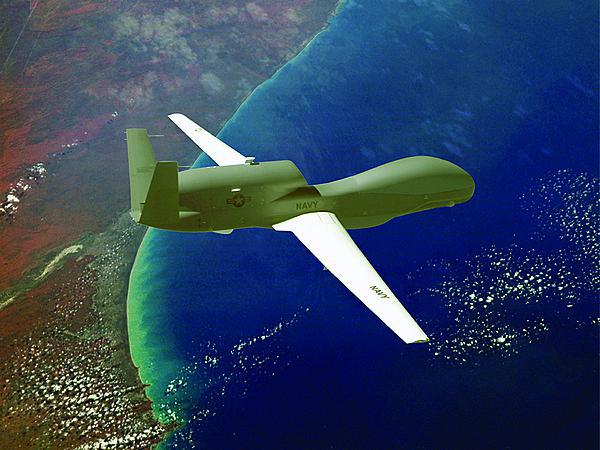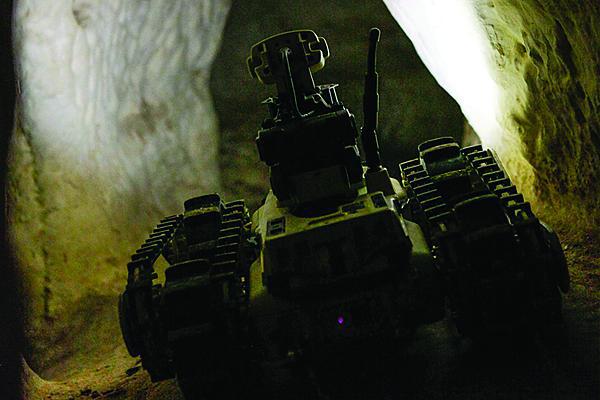Combating Terrorism with Next-Generation Mesh Networking
U.S. Defense Department and interagency special operators are scheduled to begin receiving new tactical mesh networking equipment this month. The kit provides a mobile, ad hoc, self-healing network that offers a full range of situational awareness data, including intelligence, surveillance and reconnaissance feeds, blue force tracking and a voice over Internet protocol capability.
The Defense Department’s Combating Terrorism Technical Support Office (CTTSO) intends to provide production prototypes of the Next Generation Tactical Mesh Network (NG-TacMN—pronounced tackman) to a wide range of special operators. “They’ll have the first production models, the field-ready prototypes in October,” reports Gabriel Ramos, director, Technology Division, CTTSO. “We’re going to conduct new equipment training at different unit locations to support the operators around the continental United States. That will be conducted from the October to December time frame. The goal here is to have exceptionally trained and equipped tactical operators, small tactical units of dominance.”
The NG-TacMN kit incorporates both hardware and software solutions, lightweight radios, operational control units, situational awareness software and tactical sensors. It is capable of secure dissemination and viewing of multiple full-motion video streams—including those from unmanned air and ground vehicles, point-to-point and group chat, voice over Internet protocol, Blue Force Tracking and file transfer. It also includes mapping capabilities provided by Google and FalconView.
One of NG-TacMN’s primary benefits, CTTSO officials say, is that it lessens the amount of time between sensing a target and shooting the target. “It shortens the sensor-to-shooter loop and provides superior capabilities to tactical operators to enhance command, control, communications and computers with intelligence, surveillance and reconnaissance capability integration—C4ISR,” Ramos says.
The communication kit does not require a cellphone infrastructure or a back-end server to work, which has caused problems in similar programs, Ramos offers. “It’s key to note that this is a serverless system that uses patented wave relay technology. This means the communications infrastructure, in essence, moves with the end users as they move and has no single point of failure,” he offers.
The kit includes a 1-pound mobile device similar to a commercial smartphone. The Ruggedized Operator Control Unit 5, with 5-inch screen, is a little larger than an iPhone and is tailored to fit tactical needs. It has connectors designed specifically to work with the radios and other C4ISR equipment special operators use. The touchscreen works even with gloved fingers in cold, hot and medium weather conditions. Additionally, it is glare resistant and compatible with night vision goggles.
Although heavier than an iPhone, the system is still smaller and lighter than many systems soldiers currently lug around on the battlefield. CTTSO officials are tinkering with the ruggedized casing to see if they can reduce the weight without risking the mobile device’s ability to survive battlefield conditions. “Operators want a reduced tactical operational load, so less carried weight. They want to be able to push as much information as possible and be able to understand that information,” Ramos observes, equating communications to “a digital gunfight” in which the fastest, most accurate information wins.
The system also includes a telestration capability. CTTSO officials compare telestration to the feature football commentators use to draw lines, circles and icons on the screen while describing plays. In a tactical environment, this feature will allow soldiers and other special operators to share information instantly without breaking radio silence. “A lot of times you have icons that pop up, and that’s state of the art, but say a unit approaches an objective and something changes in the plan. We want operators in the field to be able to scribble it out so that other users are able to see it on the screen in real time,” Ramos explains. Telestration enables tactical operators to highlight their routes or areas of operation, or to drop in icons during planning or execution phases of the mission or objective.
For example, a hypothetical tactical team may need to secure a compound or village. “This capability takes tactical operators away from paper-based planning and propels them into cutting-edge, 21st-century special warfare by allowing them to collaborate using Android and Windows-based compatible technology in real time. Tactical operators can identify, mark, coordinate and communicate changing battlefield conditions in real time to the entire assault force support element with the touch of a finger or the stroke of a stylus pen,” Ramos reports.
CTTSO officials decline to discuss which agencies, organizations or military units will receive the new kits. However, the system’s predecessor, the Air-to-Ground Mobile Mesh Network (AGMMN), has been provided to U.S. Special Operations Forces, the FBI Hostage Rescue Team, the Border Patrol Tactical Unit, the intelligence community and Canadian Special Operations Forces Command, according to CTTSO’s website. AGMMN has been deployed to “real world operations,” Ramos confirms.
Interoperability with the predecessor system, among agencies and organizations as well as with other C4ISR equipment, is a critical requirement for the NG-TacMN, officials say. When the system is fielded and units trained, the CTTSO team also will help ensure it works with other technologies. “Users are going to probably integrate it with some of the legacy comms and sensors. We’ll be there for that,” Ramos assures.
Units that already use the AGMMN may not be able to afford to replace their equipment fully with NG-TacMN, making integration and interoperability, which have proved a constant challenge, that much more important. “One objective is to integrate new equipment that is out there, but also to ensure that this new kit is integrated and interoperable with the legacy kit that our units have, so they can fight with both,” Ramos says.
Integrating the hardware and software has been a technical challenge. “The Android and Windows software versions are constantly evolving along with mobile computing hardware. Any time the software and hardware change, you have to ensure they still work together correctly, and this is a very time-intensive quality assurance process,” Ramos points out.
CTTSO (SIGNAL Magazine, July 2014, page 47, “Counterterrorism Partnerships...”) supports more than 100 agencies at the local, state and federal level, so requirements can vary significantly, even down to the colors for icons on the screen or colors for the carrying case, Ramos reveals. “CTTSO does its best to ensure its projects and resources match up with the most end-user requirements and provides the greatest capability increases for all. As with any project, balance and cost, schedule and performance are not easy, especially with multiple and sometimes disparate end-user requests,” he says.
The NG-TacMN project began in 2012 as a spiral development following the AGMMN project. Both projects were conducted at the request of the Defense Department and the interagency tactical operators to provide an enhanced situational awareness through a state-of-the-art communications kit. Special operators have had the predecessor system for several months so that they can offer feedback for improvements. CTTSO officials say they include users from the full range of local, state and federal special operators in every step of development.
Future versions might be improved based on additional user feedback. “After a thorough end-user test and evaluation, we’ll sit with the users and vendors and make a determination whether spiral developments and improvements will be made,” Ramos says. “We have some time that we can improve some things if we need to.”
But for now, CTTSO officials say they feel like they have succeeded. “We’ve overcome the challenges. We’ve overcome the objectives to make this next-generation leap-ahead system. The communications piece is good. The mobile relays, full-motion video, ISR feeds, point-to-point group chat, voice over IP, blue force tracking, map telestration, file transfer and map data are all solid. I don’t see any remaining challenges. It’s looking good,” Ramos observes.






Comment
That's great! Getting the
That's great! Getting the soldiers out of danger while using tech to our advantage.
Comments